Excerpts from Jim Conrad's
Naturalist Newsletter
Entry from field notes dated June 30, 2023, taken along small gravel road about 1 km west, across valley, of El Suspiro about 1 straight-line km NW of El Doctor; in the mountains of east-central Querétaro state, municipality of Cadereyta de Montes, 12 straight-line kms due east of Vizarrón de Montes but much farther by twisting roads; elevation ~2600m (~8500 ft), Querétaro, MÉXICO, (N20.85563°, W99.58686°)
PUPAE IN OPEN-MESH COCOONS
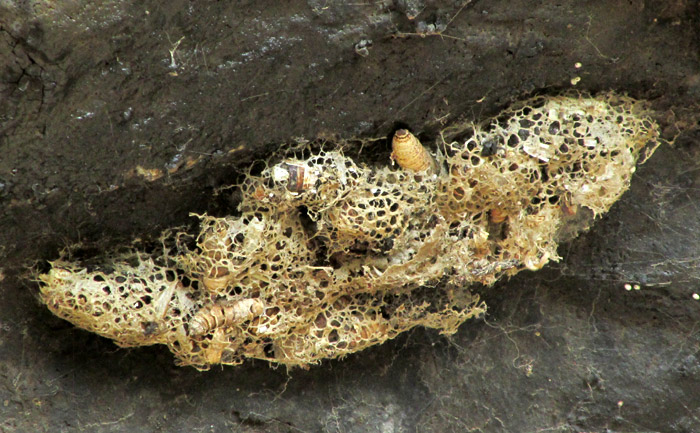
Sheltered by a massive rock overhang, about 4m (13ft) above the dusty-dry, bare ground, the above larvae and pupae were encased in a network of tough webbing. Below, you see several mostly smaller webbed structures in the same area:
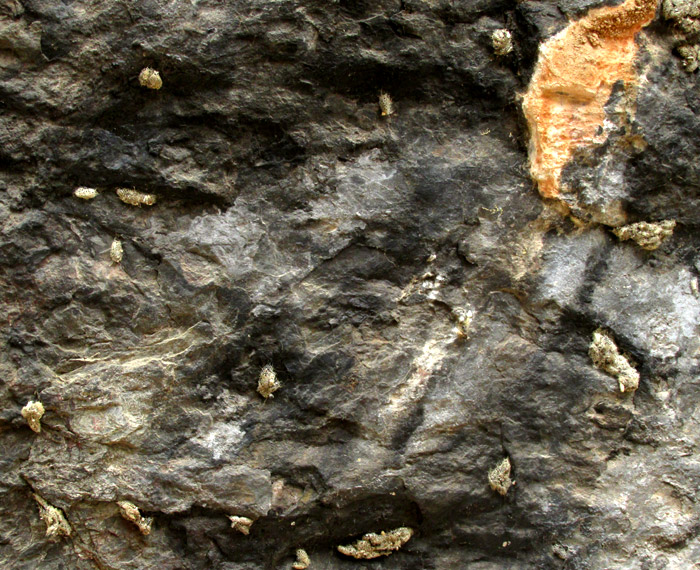
I think the black rock the webbed structures are attached to consists of an igneous intrusion of basalt into a cliff otherwise composed of sedimentary white limestone. The cocoons occurred only on the dark rock, perhaps taking advantage of warming from the morning sun on this east-facing slope.
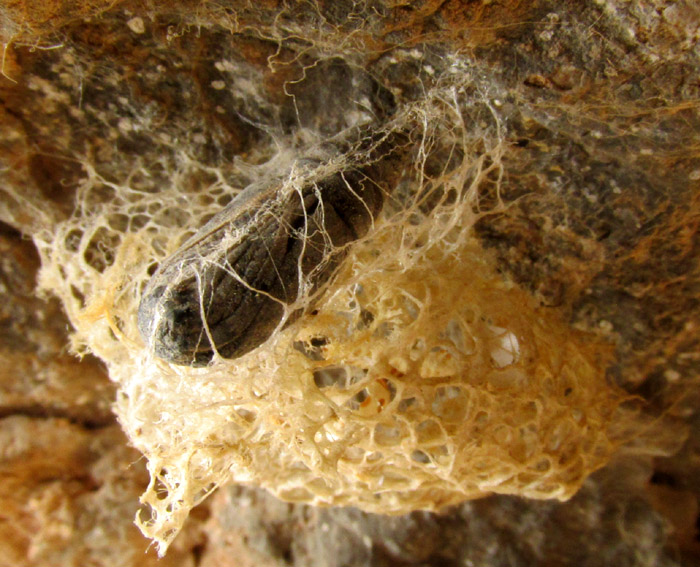
Only a few cocoons were low enough for such close pictures as the above. The webbing appeared to have been damaged, revealing the pupa which otherwise would have been more obscured by the webbing. I suspect a bird did it, possibly the Canyon Wren, Catherpes mexicanus, which was active all about the overhang, exploring every crack.
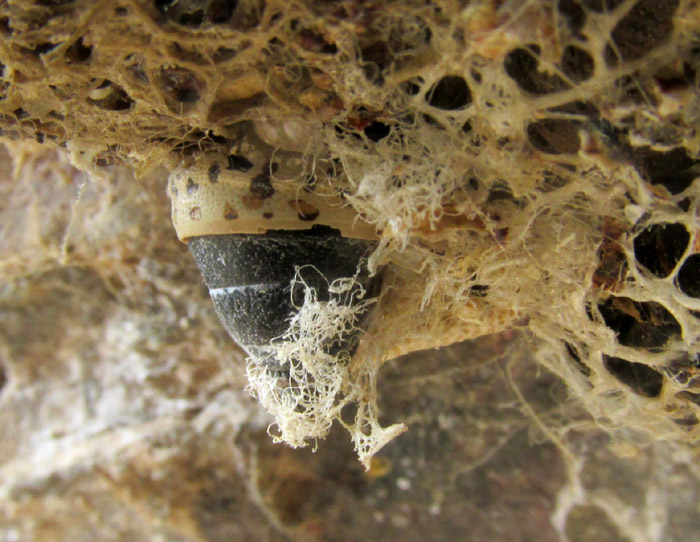
The above cocoon also appeared to have been damaged, providing an interesting but hard to interpret view of a pupa's rear end.
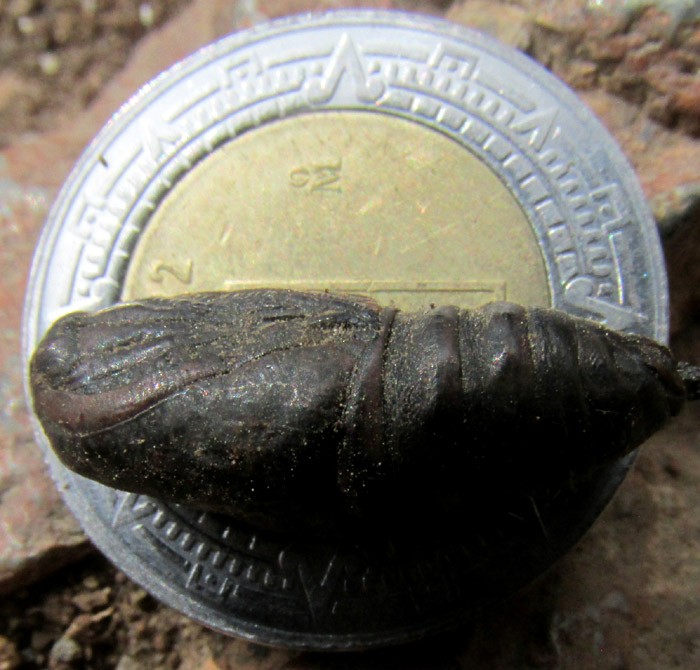
The above pupa lay atop dust below the overhang, perhaps dropped there by a wren. The pupa is atop a Mexican one-peso coin, which I measured as 20.5mm in diameter (0.8 inch). Here's a close-up of the pupa's "head":
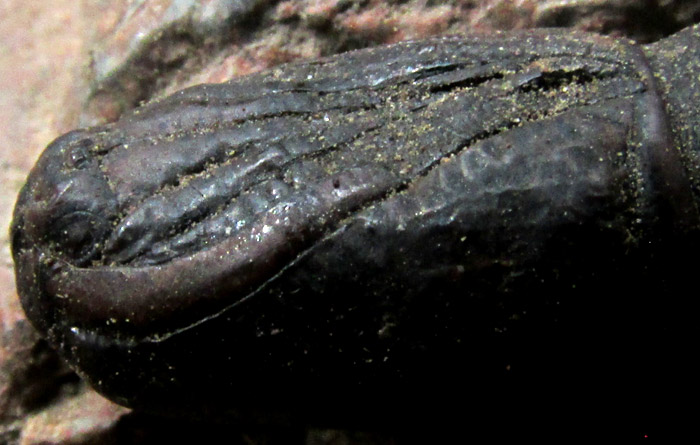
Here's the habitat, with my tent directly below the cocoons, where I stayed for a couple of nights:
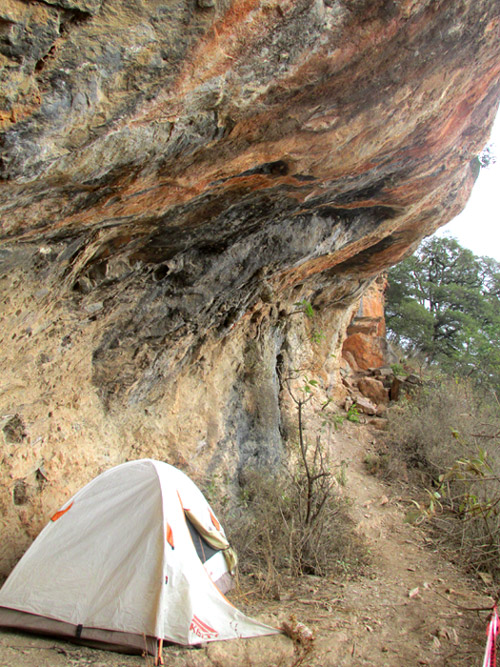
So, what kind of creature might enmesh such pupae in such remarkable meshes? The pupa's head appears to suggest a complex antenna system. Volunteer butterfly-and-moth volunteer Bea in Ontario said it looked like a lepidopterid.
On the Internet, by searching with key words such as "moth webbed cocoon," eventually I found a moth pupa surrounded by a protective structure somewhat similar to ours, and the structure was referred to as an open-mesh cocoon. That cocoon had been made by Wockia asperipunctella, in the False Burnet Moth Family, the Urodidae. Similar slender-threaded cocoons also are produced by certain Diamondback Moths of the Ermine Moth Family, the Yponomeutoidae. However, the open-mesh cocoons formed by these families aren't as large and thick-threaded as ours.
In the False Diamondback Moth Family, the Glyphipterigidae, False Diamondback Moth cocoons look more like ours, though that family doesn't appear to occur in our central Mexican highlands. Also certain moths in the Diamondback Moth Family, the Plutellidae, produce such course, asymmetric open-web cocoons. That family does have Plutella xylostella in upland Central Mexico, but its cocoons are much more finely woven.
I don't know what we have here, but possibly it's something quite interesting that should be brought to the attention of researchers someplace. Identified pictures of cocoons are hard to find. The closest match I've seen to our cocoons were in the Diamondback Moth Family, the Plutellidae, but all families mentioned above seem to produce moths and meshes smaller than ours. Larvae often are leafminers.
I hope someone will see this and provide more ideas via email.